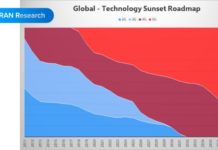
Private and commercial networks are expanding, adding new challenges to enterprise infrastructure management. According to GSA data, the number of companies investing in private LTE or 5G mobile networks increased by 20% between 2020 and 2021 – a figure that will only continue to increase as more use-cases are realized. As businesses take control of their own telecom networks, there is an upward trend in 5G deployments for private mobile networks and nearly half (44%) have already deployed 5G for a private mobile network or plan to do so in the near future. Quality of Service (QoS) is a key benefit of 5G, and with network slicing now gathering steam as a viable and scalable alternative, there’s more to consider.
Powering transformation – Private networks and 5G Network slicing
Capitalizing on 5G’s ability to transform business operations and build business resiliency, enterprises are considering either private networks or network slicing, offering users and subscribers the best possible quality of service, while balancing efficiency with security. The toolset and operational capabilities needed to deliver slicing have to be understood and trusted by the telecom teams implementing this on the network.
Large enterprises are embracing private 5G networks as it is self-contained and has its own spectrum. Considered to be more trusted and secure, it offers full ownership over security protocols, privacy, customization and access. A 5G network slice, however, is taken from a provider’s public 5G network to create a virtualized 5G network. Network slice as a service is a perfectly viable way for businesses to tap into the power of 5G – easier to scale and minimizes operating expenses as well as capital expenditures and can be customized based on specific service requirements. This is also driven from the phone/device perspective, with new android devices supporting slicing at the OS level.
The advantages and drawbacks of private networks
As private networks are dedicated, they offer better control and security than public networks, while delivering on quality of service. Also, they are tried and tested in the field with multiple deployments already up and running. However, depending on what a business wants to achieve, private networks can be difficult to scale up (in capacity and distribution). Managing one or two private networks is fine – but what happens when dozens or even hundreds of networks are needed? This is when the private network approach becomes cumbersome and the focus turns to their cost-effectiveness and capability from a business perspective. With private networks, mission-critical use cases demand telco-grade equipment and services, however deploying a fully on-premise network with such high confidentiality and security requirements would mean significant investment.
Network slicing – a key enabler in 5G networks
5G network slicing will be a significant driver of enterprise 5G adoption, as it delivers some key advantages. Network slicing essentially applies virtualization principles to mobile networks, allowing communication service providers (CSPs) to create network segments, separating users, devices or use-cases that require a particularly high quality of service. Network slicing delivers on the key benefits of private networks, allowing businesses to scale up or scale back seamlessly, extending flexibility in their approach to network management and deployment. The underlying infrastructure remains the same, and CSPs can create more tailored and streamlined experiences for their users.
5G-connected ambulances are a great example of how network slicing can work to great effect. A “smart ambulance” will be able to relay data about a patient from the field back to the hospital far more effectively and securely if the hospital – or emergency services have their own “slice” of a 5G network.
The significance and drawbacks of network slicing, and how they compare to private networks, are difficult to determine at the moment, but as development continues the scalable software solutions continue to make 5G slicing more accessible and the true potential of network slicing will become an operational reality. On the device front, new families of devices will support slicing from OS level and this will also create demand in the market. Network slicing is the key to monetizing 5G investments opportunity and CSPs should be considering how to capture new revenues from industries and enterprises.


















